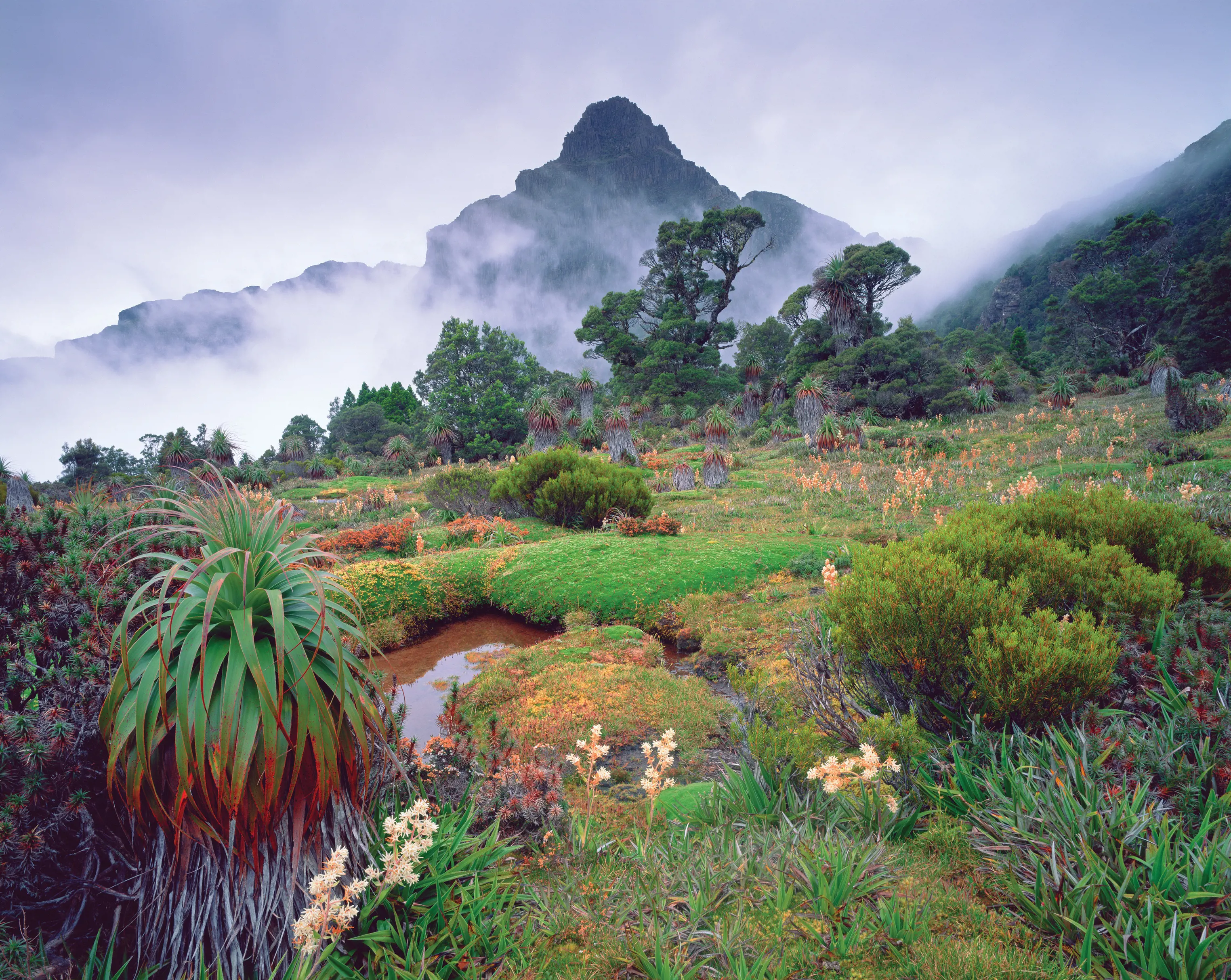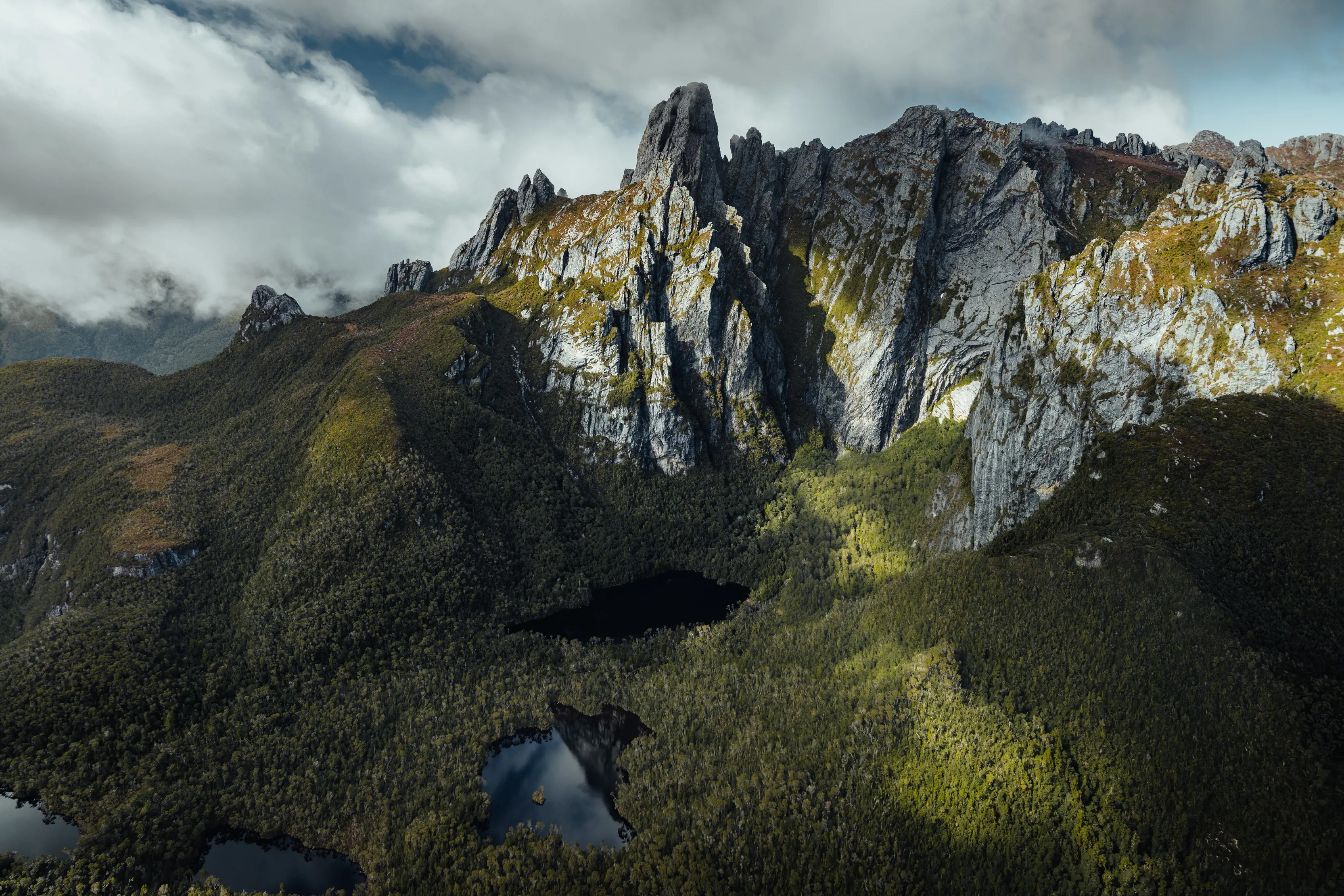
Travel anywhere in southern Tasmania and things get truly wild.
The Southern Ocean lashes its edges, cliffs tumble hundreds of metres into the sea, and the mountains of the Tasmanian Wilderness World Heritage Area loom large on the skyline.
Here, you’ll find four diverse national parks, covering mountaintops and coastlines, and caves burrowed deep beneath.
Hartz Mountains National Park
The mountains are made accessible at this national park that forms part of the eastern edge of the Tasmanian Wilderness World Heritage Area. Just a 90min drive south-west of Hobart, the park is dotted with glacial lakes and walking trails to waterfalls, tarns and the greatest goal of all – the park’s highest point, 1254m Hartz Peak.

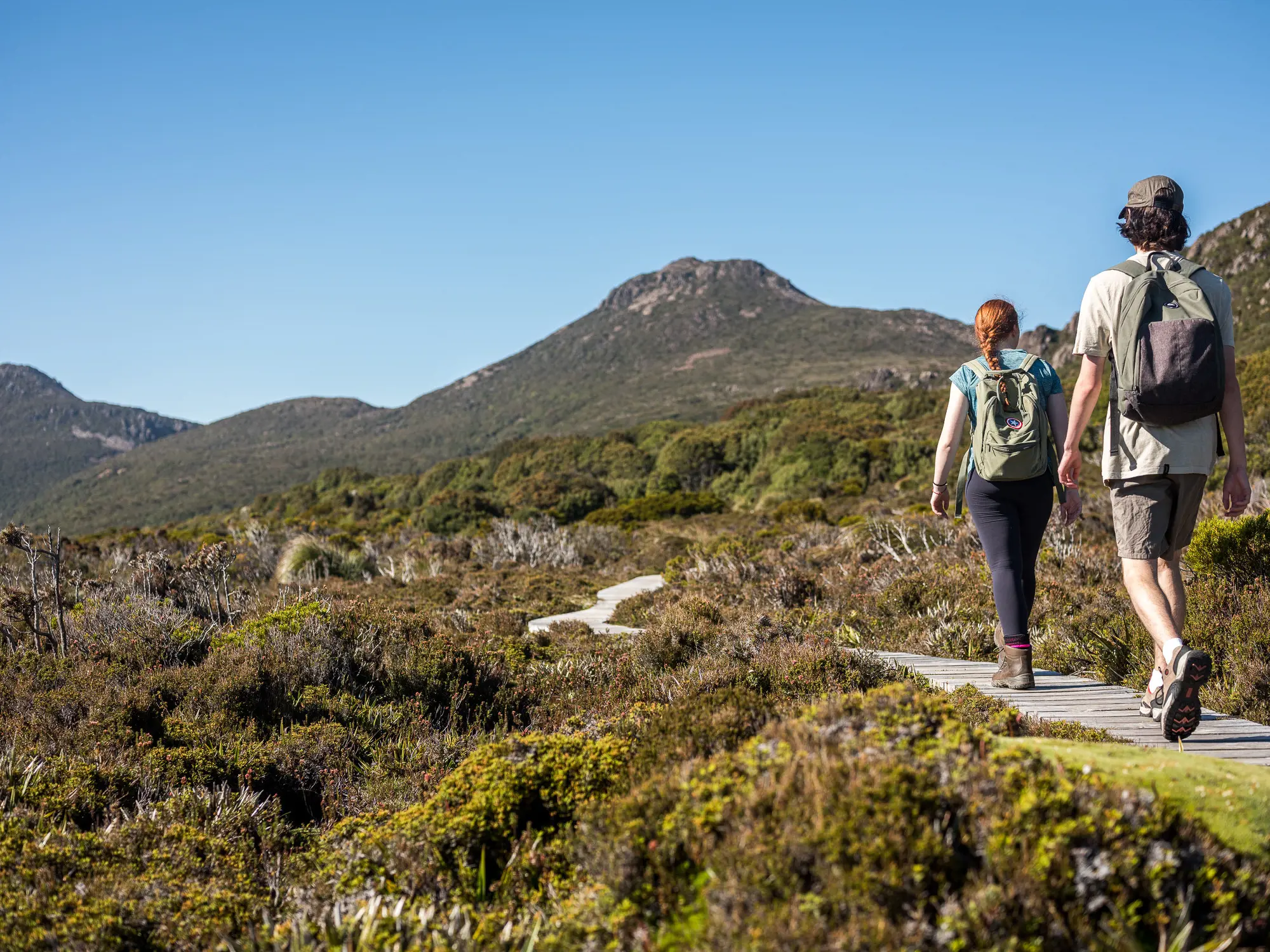
South Bruny National Park
Running like a frame around the southern edges of Bruny Island, this national park is a place of high cliffs, long beaches and one of Australia’s most evocative lighthouses. Take a tour of Cape Bruny Lighthouse, step out on two of Tasmania’s 60 Great Short Walks, and keep an eye out for Bruny’s unusual white wallabies.
Tasman National Park
Feel invincible as you stand atop Australia’s highest sea cliffs, 300m above the unruly Southern Ocean. Admire this national park’s rock stars such as Tasmans Arch, Tessellated Pavement and rare glimpses of the Totem Pole – a sea stack famed globally among rock climbers – and take a journey on foot on the Three Capes Track, a four-day, 48km track showcasing the cliffs and other wonders through the park.
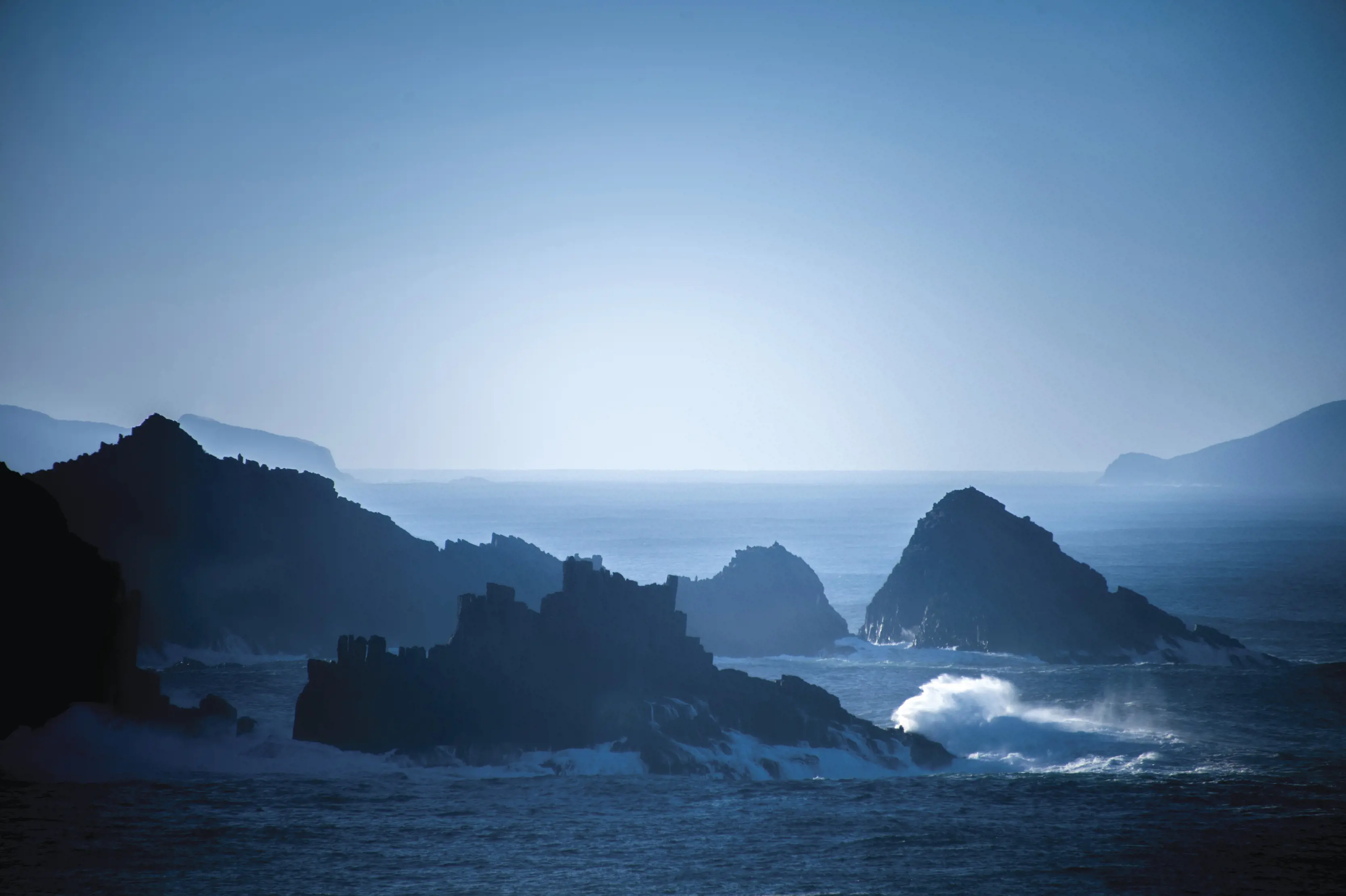
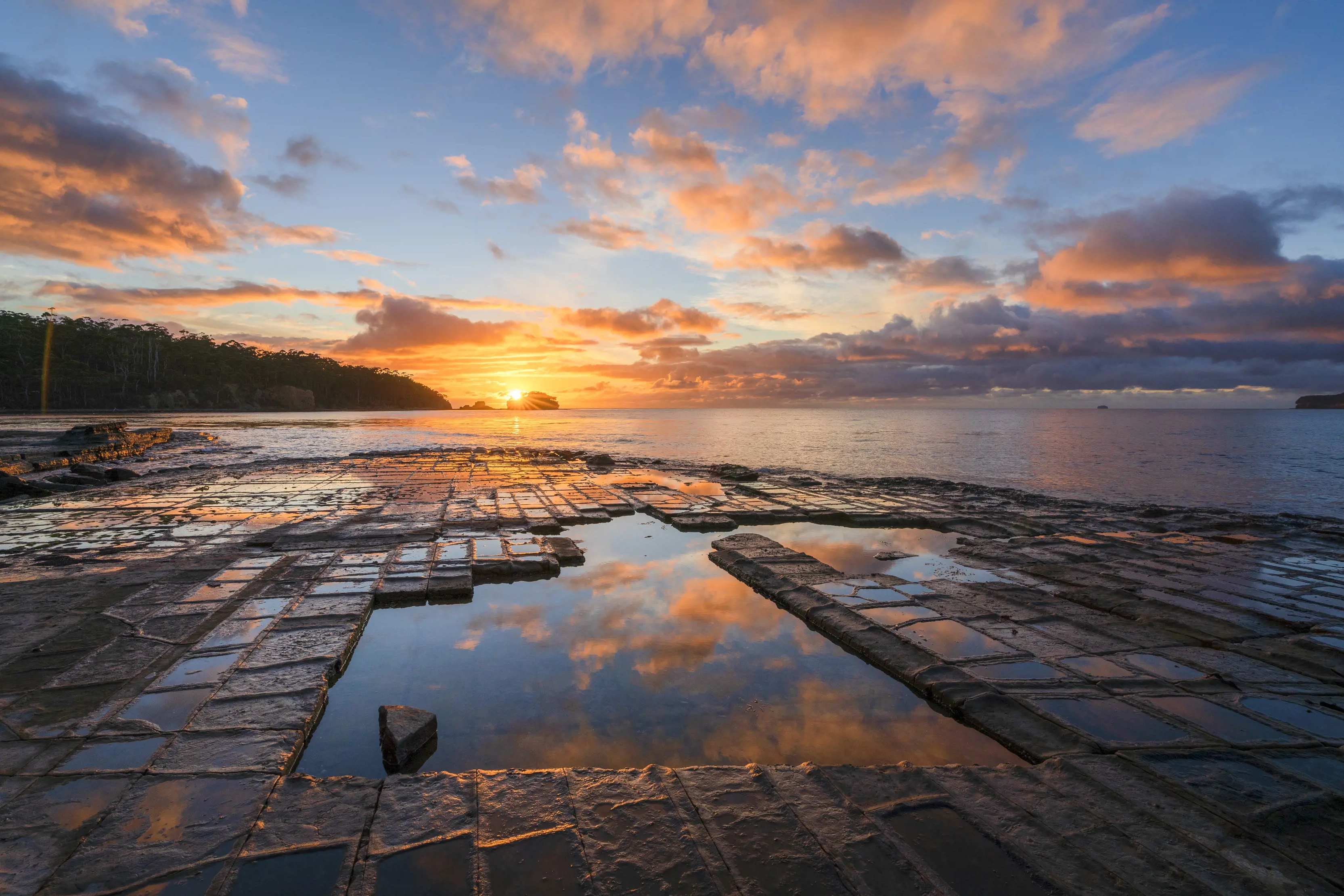
Southwest National Park
When you reach the end of the road at Cockle Creek, there’s an undeniable sense of something special. This is the most southerly road point in Australia, and it’s the edge of the vast Southwest National Park, the largest piece of the Tasmanian Wilderness World Heritage Area and the state’s biggest national park. Set up camp, or make tracks for the south coast on the walk to South Cape Bay, in sight of Australia’s southernmost point. One of the state’s most rewarding and challenging multi-day hikes, the South Coast Track, also starts or finishes here.
Hastings Caves
When timber workers set out into the southern forests one day in 1917, they didn’t expect to discover an enormous cave. Richly decorated Newdegate Cave, inside Hastings Caves State Reserve, is the largest dolomite cave open to visitors in Australia and contains a treasury of stalactites, columns, shawls, straws, stalagmites and unusual helictites. The temperature underground is a steady nine degrees, so warm up afterwards with a relaxing soak in the 28-degree waters of the reserve’s thermal pool, tucked behind the visitor centre.
